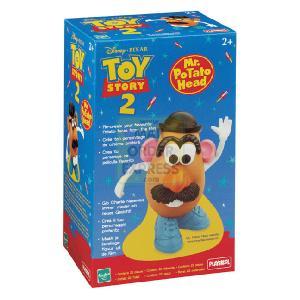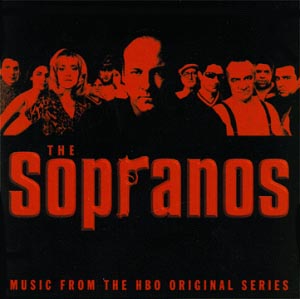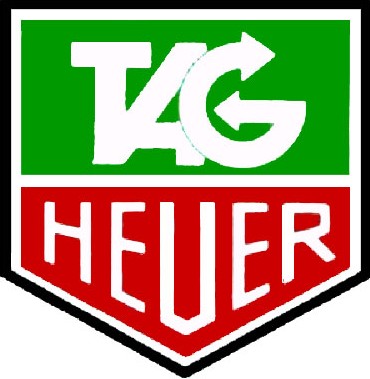As FTV students who are experienced consumers of media, it's easy to spot commercials and advertising. They're annoying, blatant, patronising and, in many cases, deceitful. So much so, many of us instantly hit the TV mute button as soon as KFC starts promoting its new chicken strip burger. For the seller of any product, this is a problem because potential buyers (as we are) can dismiss what we're seeing as "just another crappy advert". Like any viewer who simply wants to sit back and enjoy their program, we will inevitably skip over the commercials.
Today's consumers are overwhelmed with advertising everywhere - TV, radio, billboards, magazines, buses, newspapers, the Internet... And these are just the usual suspects. More and more ad-space is popping up every day. From people walking down the street wearing signs, to flyers shoved in our mailboxes and tucked under our car windshield wipers, to ads on the ATM screen as we wait for it to dispense our cash - we see ads all day, every day.
But a more subtle form of advertising is product placement. It can promote a product without the consumer's brain turning on the defense mechanism that usually happens when it detects a commercial. Companies like to place products in movies because the audience is in the right kind of mental mode to absorb the images and story contained in the movie. Plus, the audience cannot fast-forward through anything that seems like advertising.
Have you ever watched a TV show or a movie and felt like you were watching a really long commercial? If so, then you've been the victim of bad product placement. There's certainly a line that can be crossed when presenting brand-name items as props within the context of a movie, television show, or music video. Clever marketing folks try never to cross that line. They want their products to be visible within a scene, but not the focus. The product needs to fit, almost seamlessly (almost being the key word here) into the shot and context of the scene.
When done correctly, product placement can add a sense of realism to a movie or television show that something like a can simply marked "soda" cannot.
The evidence?
Since the cartoon character Popeye ate Spinach, advertisers have known product placement is a powerful way to get people to try their product. When children saw Popeye eating spinach, they wanted to eat it thinking it would make them stronger too.
"Toy Story"- featured Etch A Sketch, Mr Potato Head and Slinky. After the movie's release, Etch A Sketch sales increased 4,500%, Mr Potato Head sales increased 800% and Slinkys (actually out of business for 10 years) was deluged with 20,000 orders and has sold US$27 million worth of the toy since.
"E.T."- Featuring the brand of candy known as 'Reeses Pieces' saw sales soar by 80%.
"Austin Powers"- Featured a Jaguar XK8 emblazoned with the Union Jack. In the US, the expensive British motor vehicle's sales increased by 70 percent.
"The Firm![]() " (1993)-When Tom Cruise visits Gene Hackman in the Cayman Islands, Hackman suggests that he "Grab a Red Stripe," so Cruise opens the fridge for a bottle of the Jamaican-brewed beer. Within a month of the film's release, Red Stripe sales in the US had increased by over 50%, and just a few weeks later, company owners sold a majority stake in their brewery for $62 million to Guinness Brewing Worldwide.
" (1993)-When Tom Cruise visits Gene Hackman in the Cayman Islands, Hackman suggests that he "Grab a Red Stripe," so Cruise opens the fridge for a bottle of the Jamaican-brewed beer. Within a month of the film's release, Red Stripe sales in the US had increased by over 50%, and just a few weeks later, company owners sold a majority stake in their brewery for $62 million to Guinness Brewing Worldwide.
"Goldeneye"(1995)- BMW used the James Bond film 'GoldenEye' as an integrated element for introducing a new model, the BMW 328i. It was judged the most successful promotion of 1995.
"The Apprentice"- Crest's new Vanilla toothpaste recently had a placement on Donald Trump's reality TV show "The Apprentice". The Crest website got 4.7 million hits within 2 hours of the show with customers requesting samples of the new flavour. This is the highest total of website hits ever from a marketing campaign of any type.
Jurassic Park
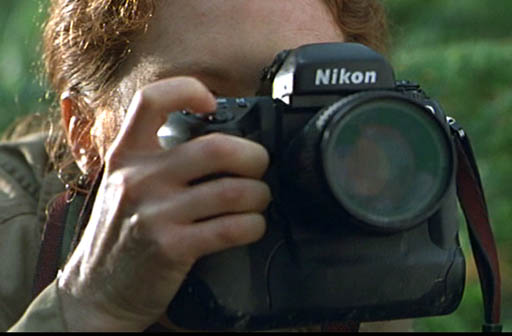
In the first sequel to Jurassic Park, there are two very obvious product placements. The first one is the Nikon camera. The second was the JVC camcorder. JVC planned an actual advertising campaign around the camera's placement in the movies. In magazines at that time, JVC showed dinosaurs in the viewfinder of the camera.
Nokia
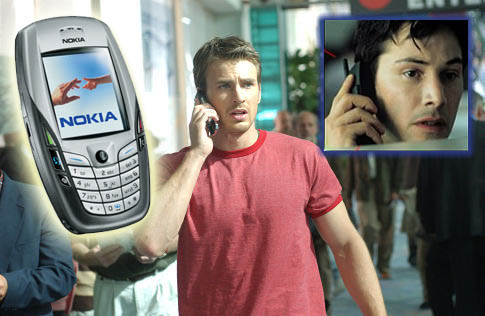
The movie Cellular is basically one long commercial for the Nokia phone. There's a line in the movie saying, “This is the single greatest phone ever made.”
Another Nokia phone was made more popular by product placement in the movie The Matrix.
iRobot
In the movie, iRobot, Will Smith's character gets his new "vintage" Converse sneaker and refers to them as "a thing of beauty." Later in the movie, Will's boss compliments him on the shoes. Many regarded this remark as very un-subtle and makers of the film were criticized for blatant product placement.
Realistic Product Placement
A worldwide trend in advertising, product placement is a vehicle for everything from foodstuffs to electronics to automobiles. So, how does it work, exactly? It's actually pretty simple.
Basically, there are three ways product placement can occur:
A. It simply happens
B. It's arranged, and a certain amount of the product serves as compensation
C. It's arranged, and there is financial compensation
If the Shoe, Shirt, Car or Soda Fits...
A. Sometimes - it's a simple fact - product placement just happens. A set dresser, producer, director, or even an actor might come across something he/she thinks will enhance the project. Usually this has to do with boosting t
 he level of credibility or realism of the story being told.
he level of credibility or realism of the story being told.One example can be found in the surprising use of a can of well-known flyspray in an episode of the popular series The Sopranos. The poisonous prop was used in a particularly violent fight scene in the show. According to an article in the newspaper USA Today, a spokeswoman for the flyspray company claimed they were not approached about the use of their product and they would not have approved of the spray's use.
For the rest of this article, we'll employ an illustrative example (a less controversial scenario). Let's say the main character in a program or movie is an unmarried, successful, well-travelled architect in his thirties. From this description, it's easy to start thinking up things to enhance the feel of this character. Maybe he drives an SUV - the 4WD would come in handy when visiting building sites. He reads particular magazines, drinks certain wines, eats certain foods... In making the character's life seem real, products necessarily come into play.
Arranged Product Placement
As mentioned earlier, when product placement is arranged, it usually fall into two categories:
* The placement is traded off for a supply of product
* There is financial compensation paid for the placement
B. The most common type of deal is a simple exchange of the product for the placement. Using our existing example, let's say the production team wants 'The Architect' to display a quirky affinity for a particular type of beverage. This will come across rather strongly over the course of the program (because the character even collects the drink's labels) - which means the chosen product could get a lot of air time. It turns out that someone on the crew knows someone who works for Nescafe. The movie people approach the good folk at Nescafe with a proposal and a deal is made; in exchange for the airtime, the cast and crew are provided with an ample supply of various Nescafe beverages at work.
C. Sometimes, a gift of the product isn't an appropriate form of compensation, so money powers the deal. Imagine that the marketing team at Tag Heuer has heard about this project and feels that, given the 'star power' of the actor playing 'The Architect', this project would be a great vehicle for showcasing its product. Someone from Tag Heuer approaches the set dresser with a financially lucrative proposal. Eventually, they come to an agreement.
Consider this scene: Our male character (The Architect) stands outside a movie theatre, waiting to meet a friend. The camera pans down to show a slight tap of the actor's foot. Next, it moves up and zooms in to show him checking his wristwatch for the time. After switching from the actor's face to the face of the wristwatch, the camera pauses just long enough for you to really see the wristwatch. He's wearing a link-style, stainless steel Tag Heuer luxury sportswatch. The camera pans out and swings around, introducing a beautiful woman into the scene... During the next hour of the program, the wristwatch casually appears in several scenes.
Both teams are happy - the integration of the Tag Heuer product is a success. Remember, the advertised product's role is to be part of an ensemble cast rather than the (obvious) star. Tag Heuer manages to reap the benefits of conventional advertising without being overtly obvious or intrusive to the audience/consumers.
Product Placement in the Movies
The next time you watch a movie, try to keep an eye out for products or brand-names you recognize. It's highly likely you'll see one of the major soft drink companies represented. Is it Coke? Pepsi? Schweppes? Once you've spotted something, see how many other scenes include that product. You'll start to see a trend. "How," you'll wonder, "can the actor hold the Coke can just the right way every time so that the logo is perfectly visible?"
Product placement in movies is so commonplace that it's even become something to parody on the big screen. Two movies that do a good job of this are Wayne's World and Josie and the Pussycats. In Wayne's World, the two main characters hawk a variety of stuff, including Pepsi, Reebok, Pizza Hut and Nuprin. The amusing part about this is that the product placement vignette takes place while the characters Wayne and Garth are ridiculing the very thing they're doing. As Wayne says "Contract or no, I will not bow to any corporate sponsor," he is opening a Pizza Hut box and pulling out a slice of pizza. The camera lingers on the Pizza Hut logo and Wayne, holding the slice of pizza lovingly beside his face, smiles straight at the camera.
The movie Josie and the Pussycats takes the joke several steps further. A send-up on the music industry, this film manages to satirize name-brand integration throughout the film. To get an idea of just how saturated with brands, logos and products this movie is, here's a taste of what you'll see in just the trailer alone (Keep in mind the trailer is only 2min.25sec long!): American Express, Billboard Magazine, Campbells SOup, Coke, Evian, Ford, Gatorade, Krispy Kreme, Kodak, McDonalds, Milky Way, Motorola, Pizza Hut, Pringles, Puma, Ray Ban, Sega, Starbucks and Target.
Jerry Maguire
Like lots of advertising methods, product placement can be a 'hit or miss' proposition. One particular example of product placement gone wrong is the Reebok/Jerry Maguire fiasco. Reportedly, Reebok had a placement agreement to integrate one of its commercials at the end of the film Jerry Maguire. The commercial didn't make it into the final cut of the film production - but something else regarding Reebok did. In a pivotal scene, Cuba Gooding Jr.'s character makes disparaging remarks about the company.
Talladega Nights: The Ballad of Ricky Bobby
In a curious twist, the hijacking of movie-making by corporate interests turned out to be an absolute non-issue in Will Ferrell's 2006 comedy film Talladega Nights. "Everyone was saying 'They must be making a fortune off this product placement,' but the truth is we didn't get a dime off of it," says co-writer Adam McKay. "We're really just into making fun of a lot of the products, like Old Spice, it's so cheesy ultra-American, but they're also smart and hip for doing it." From Domino's to Powerade and every other brand-name in between, none of the astonishing amount of blatant product placement earnt the film any money.
http://money.howstuffworks.com/product-placement.htm/printable
Questions
In your workbooks, answer the following questions in sentences. Refer to the information above.
1. In a paragraph of roughly 75 words, explain why a company would sooner place its product in a movie rather than simply fork out prime-time TV advertising dollars.
2. “…products to be visible within a scene but not the focus”. In a paragraph of roughly 75 words, explain the significance of this distinction. To support your response, include an example of a real world product placement.
3. In three columns across your page, distinguish between the three methods of product placement.
4. What is 'virtual' product placement? Visit the site...
http://brandautopsy.typepad.com/brandautopsy/2006/01/virtual_product.html
Record brief notes on what you discover here, but use these startup ideas to research this phenomenon further.
4. Visit the following website...
http://www.theshiznit.co.uk/feature/top-10-worst-movies-for-product-placement.php
Other Relevant FTV sites:
http://thefrenchnewwave.blogspot.com/
http://thewesterngenre.blogspot.com/
http://filmpitch.blogspot.com/
http://filmcrewproductionroles.blogspot.com/
http://get-up-and-run.blogspot.com/


